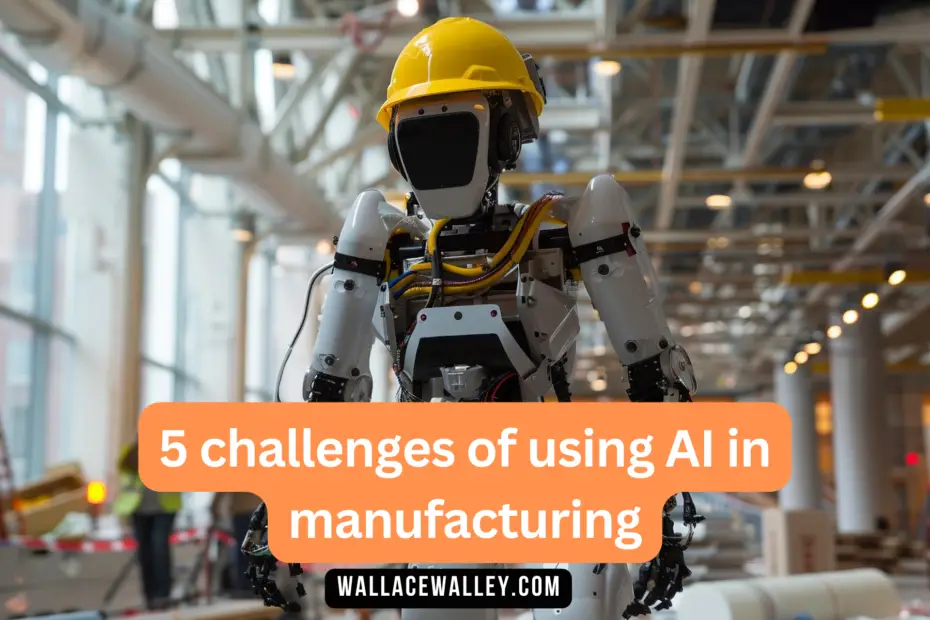5 Challenges Related to the Use of AI in Manufacturing
AI has the potential to help businesses improve their existing manufacturing processes, but supply chain managers must also understand the potential challenges associated with using AI in manufacturing.
Algorithms, automation, and machine learning (ML) can potentially help businesses reduce their operational costs, increase their efficiency, and improve the quality of their products.
However, it can be challenging to integrate AI with other systems and to find employees with the required AI expertise.
Some manufacturers may find that integrating AI into existing operations is a complex process. Discover key strategies to help you address these difficult issues before implementation.
How AI Can Help Improve Manufacturing
Businesses can use AI to perform the following operations:
– Model different use cases and test them. This can lead to improvements of manufaturing.
– Identify factors that hinder productivity and find areas for improvement.
– Enhance the speed and quality of manufacturing through automation.
5 Challenges Related to the Use of AI in Manufacturing
However, the use of AI in manufacturing can also lead to potential problems. Supply chain managers must be aware of these issues in order to take precautions against them.
1. Poor Data Quality
AI and ML depend on access to large amounts of high-quality data, so the results of AI and ML will not be reliable if the company’s data includes poor quality information.
To avoid data quality issues, consider the following approaches:
- Understand the data the algorithm needs and how it processes it.-
- Collect, compile, and clean the necessary information.-
- Regularly check inputs and outputs.
2. Concerns About Employee Job Security
Many people are currently worried about the impact of AI on their livelihoods. According to a 2023 Gartner survey, workers who believe AI will take away their jobs are 27% less likely to intend to stay with their company.
Business leaders must understand the concerns that the workforce may have about being replaced. Employees may not wish to engage with the company’s AI technology, which can potentially lead to delays.
Supply chain managers must work with other leaders in their company to prepare for these issues by being direct and honest about the potential effects of AI on the organization and by offering retraining and education opportunities to the affected workers.
3. Limited Access to Talent
The implementation of AI and ML requires specific knowledge, and manufacturing companies will need to invest in data scientists, analysts, and other experts in algorithms and automation.
However, the rapid growth of AI across all sectors means that it can be difficult to find individuals with the appropriate expertise to fill these positions.
A similar issue may affect an organization’s existing manufacturing workforce, as employees may not possess the necessary knowledge and skills. Business leaders can address these issues by:
- Understanding recruitment needs by collaborating with human resources, workforce experts, and potential suppliers to learn more about talent requirements for the implementation and operation of AI.
- Investing in competitive compensation and packages to attract the most talented AI experts.
- Ensuring employees have access to ongoing support when using new AI capabilities.
4. Lack of System Integration
AI manufacturing systems must integrate with other technologies to enhance manufacturing processes.
Legacy systems are common in manufacturing companies for many reasons, including the uncertain return on investment from upgrades and the overhead costs associated with implementing new technologies, but AI may not be able to integrate with older systems.
Manufacturing companies looking to integrate AI into the organization’s current technology should take the following steps:
- Review the areas of the organization to which the AI-powered manufacturing systems will need to integrate.-
- Discuss with AI providers about the technology integration capabilities.-
- Find out the necessary upgrades for existing manufacturing systems to enable AI.
5. Trying to do too much, too quickly
Many manufacturers are eager to implement AI swiftly to capitalize on potential benefits and enhance the organization’s competitive edge. Unfortunately, doing too much too soon can lead to poor implementation that fails to yield ideal results.
Business leaders can avoid this by adopting a gradual approach to AI implementation and doing the following:
- Focus on a specific manufacturing process to improve.-
- Look for AI software capable of optimizing this process while allowing the company to enhance its capabilities subsequently.-
- Implement a limited AI tool to monitor the proper functioning of the implementation.- Optimize this AI process and take note of the lessons learned.-
- Use a similar approach to gradually introduce AI across all areas of the business where it can make a difference.

